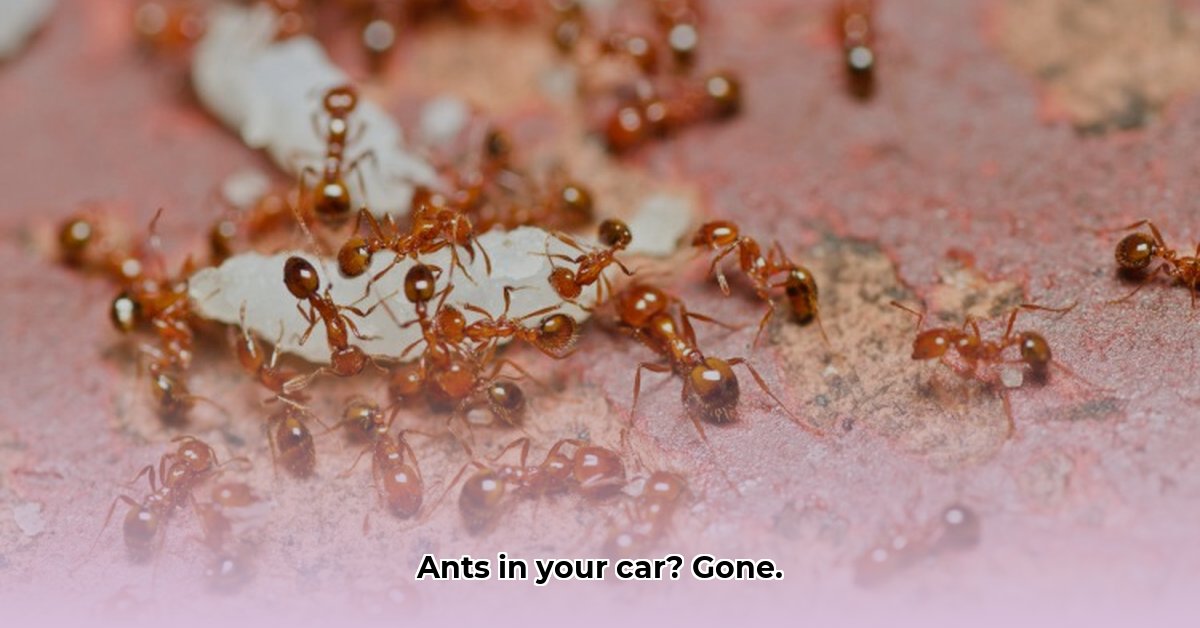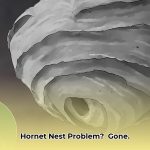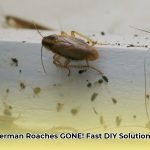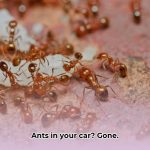Ants in your car? Not only is it annoying, but it could also indicate a larger problem. This guide provides actionable steps to eliminate those pesky invaders and prevent their return.
Why Are Ants Crawling in My Car?
Ants aren’t joyriding; they’re likely foraging for food. Crumbs, spilled soda, or that forgotten French fry under your seat are like a beacon to these tiny scavengers. Parking near an ant nest also gives them easy access to your vehicle.
Step-by-Step Ant Removal Guide
Step 1: Deep Clean – Evict the Unwanted Guests
Think of this as a deep spring cleaning, specifically designed to make your car less appealing to ants.
- Trash Removal: Remove all trash, including even small crumbs and wrappers.
- Vacuum Power: Thoroughly vacuum the entire car, including under seats, crevices, and the trunk. A crevice tool is especially helpful.
- Wipe Down: Wipe down all surfaces with an all-purpose cleaner and a damp cloth.
- Spill Patrol: Clean up any spills immediately and thoroughly. Lingering stickiness attracts ants.
[Add image/video of cleaning process]
Step 2: Targeted Ant Removal – Neutralize the Scouts
Soapy water is a surprisingly effective ant eliminator.
- Soapy Spray: Mix a few drops of dish soap with water in a spray bottle. Spray directly onto any ants you see. The soap disrupts their respiratory systems.
[Add image/video of spraying ants with soapy water]
Step 3: Baiting (Outside the Car) – Lure Them Away
Ant baits are highly effective but should only be used outside your car. Placing bait inside could attract more ants.
- Placement is Key: Position baits near where ants are entering your car, such as near tires or along the garage edge. The bait attracts ants, who carry it back to the colony, effectively eliminating the entire population. Some experts believe certain ant species are drawn to specific bait types, so you might need to try a few different kinds. There is ongoing research into more targeted baiting strategies.
[Add image of ant baits]
Step 4: Exterior Car Wash – Rinse and Repeat
Washing your car’s exterior removes lingering ant trails and sugary residues.
- Hose or Power Wash: A thorough rinse, especially of the undercarriage, removes attractants and disrupts ant trails.
[Add image/video of car washing]
Step 5: Scent Removal – Disrupt the Communication
Ants leave scent trails (pheromones) that other ants follow. Vinegar disrupts these trails.
- Vinegar Solution: Mix equal parts white vinegar and water in a spray bottle. Spray areas where you’ve seen ants, both inside and outside the car. The vinegar smell will dissipate quickly. Studies suggest that vinegar effectively disrupts ant pheromone trails, making it harder for them to navigate.
Prevention Tips – Keep Ants at Bay
Prevention is the best cure. These proactive steps will help keep your car ant-free:
- Regular Cleaning: Frequent cleaning eliminates food sources and ant trails.
- Proper Food Storage: Store food and drinks in sealed containers to prevent spills and mask tempting aromas.
- Strategic Parking: Avoid parking near ant hills or areas with high ant activity.
- Address Spills Promptly: Clean spills immediately to prevent them from becoming ant attractants.
Troubleshooting – Persistent Ant Problems
Q: What if the ants keep returning?
A: You might have a larger ant colony nearby or a persistent food source you haven’t found. Consider using different types of ant bait or contacting a pest control professional specializing in Integrated Pest Management (IPM).
Q: What if I find ants in my car’s electronics?
A: Never spray liquids directly into car electronics. This can cause damage. Consult a professional for safe removal methods.
When to Call a Professional – Expert Intervention
If DIY methods fail, or if ants infest your car’s electronics, contact a pest control professional, preferably one trained in IPM. They can identify the ant species and recommend targeted treatment strategies.
Conclusion – Reclaim Your Car
Preventing ants in your car is easier than getting rid of them. By following these steps and staying proactive with cleanliness, you can enjoy an ant-free driving experience. While current information suggests these methods are effective, research is ongoing, so new methods may emerge in the future.
- How to Get Rid of Mushrooms in Your Lawn: A Complete Guide - April 24, 2025
- How to Get Rid of Ground Hornets: A Safe and Effective Guide to Eliminating Nests - April 24, 2025
- How to Get Rid of German Roaches Fast: DIY Methods for Quick Control - April 24, 2025










